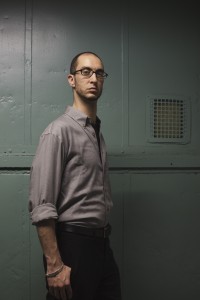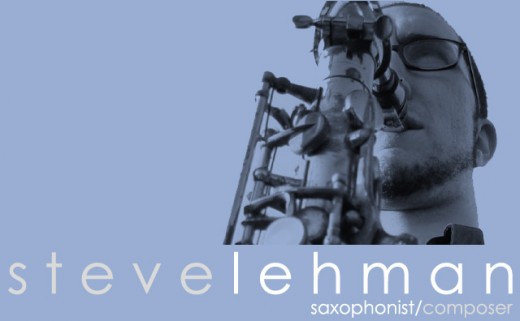![]() BY ZIVIT SHLANK At its most reductionist, music is essentially a series of variations on the same, identifiable twelve tones. However, there are structural, rhythmic, melodic and harmonic shifts that make each style of music distinct. With respect to jazz, you can look to Miles Davis’ modal experiments; Ornette Coleman’s harmolodic approach; Thelonious Monk’s quirky explorations between the notes. Three unique voices, all of who achieved the seemingly impossible; they created modern music that was both interesting and accessible. For some musicians, the search continues to tap into new approaches, permutations and tunings that dig deeper. Saxophonist, composer and educator Steve Lehman is a rarity among his contemporaries. First captivated as a youth by the bebop innovations of Charlie Parker, he’s studied with a host of innovators including Jackie McLean. He’s been recording and performing as leader and sideman since 2004, but it was in 2009 when Lehman received his most heady reception. His octet album Travail, Transformation and Flow, was universally praised as the first, fully formed infusion of spectral harmony and modern jazz on record. It showcased a truly original and passionate perspective that enabled even the most seasoned music vet to hear sounds in a totally fresh way. Lehman’s latest, a trio album entitled Dialect Fluorescent, is an hypnotically groovy entry in this forward thinking trajectory that also cleverly honors foundational jazz modernists like John Coltrane and the aforementioned McLean. Ars Nova Workshop has invited Steve and his trio to celebrate the release their latest CD with free performance at The Rotunda tomorrow night at 8pm. Phawker recently got on the horn with Steve to gain more insight.
BY ZIVIT SHLANK At its most reductionist, music is essentially a series of variations on the same, identifiable twelve tones. However, there are structural, rhythmic, melodic and harmonic shifts that make each style of music distinct. With respect to jazz, you can look to Miles Davis’ modal experiments; Ornette Coleman’s harmolodic approach; Thelonious Monk’s quirky explorations between the notes. Three unique voices, all of who achieved the seemingly impossible; they created modern music that was both interesting and accessible. For some musicians, the search continues to tap into new approaches, permutations and tunings that dig deeper. Saxophonist, composer and educator Steve Lehman is a rarity among his contemporaries. First captivated as a youth by the bebop innovations of Charlie Parker, he’s studied with a host of innovators including Jackie McLean. He’s been recording and performing as leader and sideman since 2004, but it was in 2009 when Lehman received his most heady reception. His octet album Travail, Transformation and Flow, was universally praised as the first, fully formed infusion of spectral harmony and modern jazz on record. It showcased a truly original and passionate perspective that enabled even the most seasoned music vet to hear sounds in a totally fresh way. Lehman’s latest, a trio album entitled Dialect Fluorescent, is an hypnotically groovy entry in this forward thinking trajectory that also cleverly honors foundational jazz modernists like John Coltrane and the aforementioned McLean. Ars Nova Workshop has invited Steve and his trio to celebrate the release their latest CD with free performance at The Rotunda tomorrow night at 8pm. Phawker recently got on the horn with Steve to gain more insight.
PHAWKER: Spectral harmony is a unique phenomenon. It’s an extremely fine-tuned, microtonal investigation of frequencies and sound. It must present unique challenges as a composer. When sketching and fleshing out a new song or interpretation, how do all these elements come together?
STEVE LEHMAN: I first got introduced to the music of Gerard Grisey and Tristan Murail in 2001. Both these men are seminal practitioners of spectral harmonies and techniques. I was really touched, moved and fascinated by it, and I started to think about how I could incorporate that into my own music. It was a long process that I’m still involved in; I’m still trying to integrate those ideas. At first it’s trying to stay really close to the music and sounds that relates and resonates; internalizing it as best I can. The more I do that, the better equipped I am to focus on the elements that are most personal and the better I get at articulating what I’m trying to do. From there I assert my own agency and voice and personality in the music that I write. It’s something that happens over a long period of time.
PHAWKER: It’s interesting the reactions I’ve heard to your music from both musicians and listeners. Either it’s received very enthusiastically, or it’s dismissed as being too esoteric. What are your feelings about that? Do you take into account how listeners might react?
STEVE LEHMAN: That’s pretty tricky (laughs). Ideally I’d love for anyone to find something they relate to with my music, on any level. My goal is to make music that doesn’t require previous knowledge of anything. Over the past 10 years, I came to find out something, which has been kind of a surprise. The more I’m able to get a precise and meticulous understanding about what excites me most as a listener, as a performer, as a composer, and really kind of peel away the layers that aren’t connected to that, the better I’m able to tap into what’s most personal and exciting about music. That’s my guide for connecting to and reaching out to and audiences and listeners. At first to me it seemed sort of counterintuitive, but the results have been quite surprising and the reception, more often than not, has been very positive. With this trio album there are no pop covers, no special guests or anything like that. Maybe it’d give it more crossover appeal if we did a Radiohead song or T-Pain, and I’m certainly not opposed to that (laughs). Sometimes it feels natural and it overlaps with what I’m genuinely excited about. On the trio record, we do a cover of “Pure Imagination” from Willy Wonka and the Chocolate Factory. It’s nice to have tunes like that cause it’s recognizable and it gives people something extra to engage with. There’s also a lot more for an audience to engage with in live performance as opposed to studio recordings. It’s really tricky to navigate all that.
an audience to engage with in live performance as opposed to studio recordings. It’s really tricky to navigate all that.
PHAWKER: This latest disc, Dialect Fluorescent, is a trio effort with you, bassist Matt Brewer and drummer Damion Reid, all of whom you’ve worked with for many years. It’s much more stripped down than your last recording. Was the approach this time around to get back to basics, return to your roots?
STEVE LEHMAN: There are a few pieces on the album that I’ve recorded in other contexts. It’s important for me to try and write music that rewards repeated playing and investigation, in addition to new works. The point of departure for me is always to try and create a unique and really powerful space for improvisation. It’s trying to structure and create a framework with all the musicians I collaborate with to do what they do best. Everything I write ideally emanates from that. We also do covers of John Coltrane, Jack McLean pieces. It’s part of our repertoire and it’s music we do because we’re excited about those platforms for improvisation; it’s not nostalgia. However it’s nice for people who know “Moment’s Notice” by John Coltrane or Duke Pearson’s “Jeannine” to also be able to hear our music in a more familiar context. Whether we’re playing my compositions or that of others, it’s playing that’s informed by the ideas and concepts driving the music of Coltrane, McLean, Bud Powell and others. We want to highlight the legacy of those musicians not just as virtuoso instrumentalists, but also as real conceptualists and individual thinkers. We as performers and musicians are trying to cultivate a really personal dialect that’s always rooted in a larger language and a mother tongue. We want it to be full of light, life and to be very contemporary.

